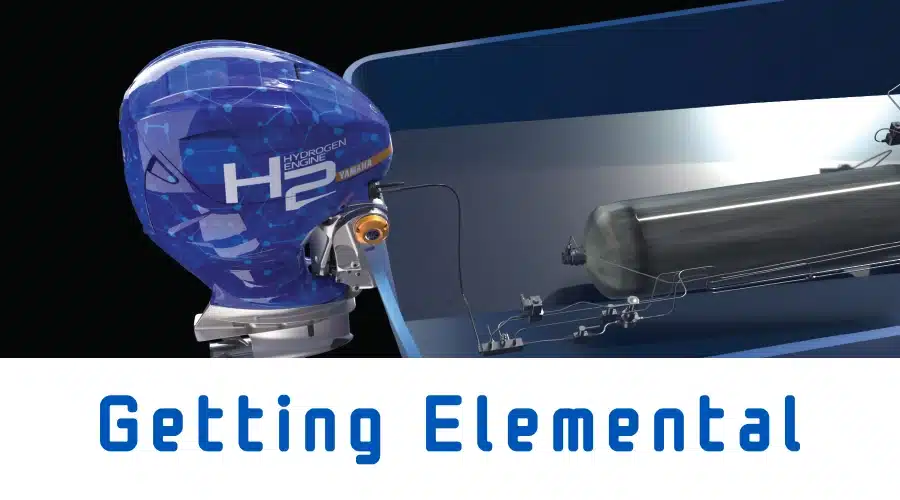
Regulator Marine Collaborates with Yamaha and Roush to Explore Hydrogen Power
One of the buzziest displays at this February’s Miami International Boat Show was the Yamaha booth, where the company showcased the world’s first hydrogen-powered outboard designed for recreational use. On their quest to achieve carbon neutrality by 2050, Yamaha Motor Corporation is investing in multiple technology solutions, including hydrogen fuel. On this project, they collaborated with Roush and Regulator Marine to develop a prototype fuel system and center console designed for a hydrogen-powered outboard.
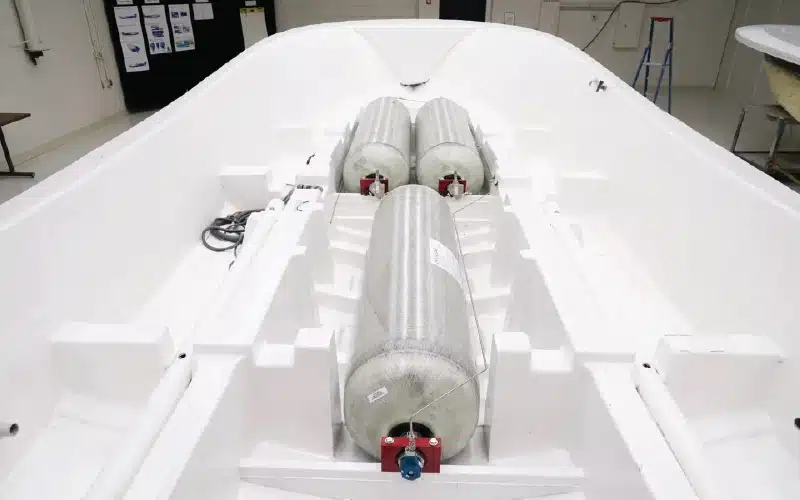
Make no mistake, this is strictly a concept boat—an innovative project undertaken to demonstrate what may be possible. Hydrogen is not yet an alternative fuel solution that is ready for the U.S. consumer market, but the team does plan to take their prototype from the showroom to on-the-water testing in the summer of 2024.
Matt Van Benschoten, Vice President of Advance Engineering at Roush, summarized the project, “Yamaha is trying to determine if hydrogen can successfully be used in this market, and I think we will find out the answer is ‘yes.’” Their efforts will also begin to inform the marine industry on safety and manufacturing standards that will likely need to be developed around hydrogen use in vessels.
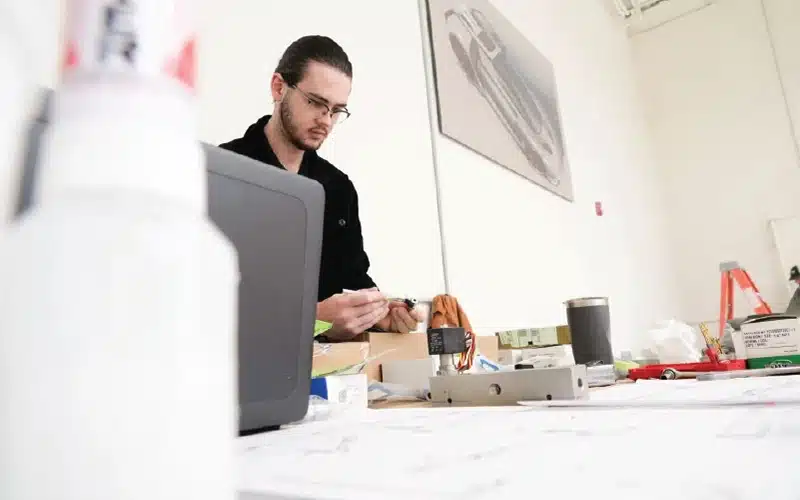
The engine itself isn’t a radical departure from the norm. Modern combustion engines all use the same general mechanical principles to harness energy from gasoline, diesel, liquid natural gas, or hydrogen fuels. The devil is in the details: building the vehicles around the power source and fuel supply and determining if it can all come together into a practical solution. Ultimately, each fuel’s processing, storage, handling, and distribution are major factors that impact their viability in the marketplace.
“If we don’t look for a new source, we won’t find a new source. Innovation starts by asking questions,” says Joan Maxwell, President of Regulator Marine.
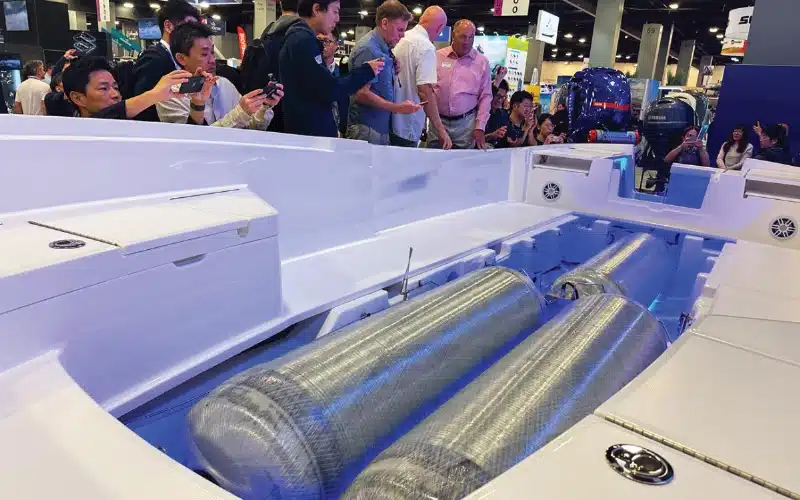
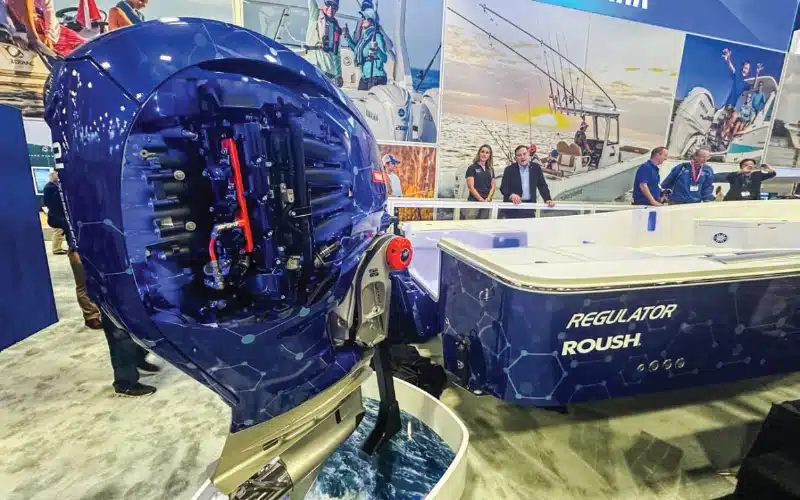
In practice however, using hydrogen in the transportation industry is still in its infancy, and one of the biggest challenges of truly becoming a clean energy source depends on how efficiently it can be extracted and processed from other compounds, such as H2O (water) and CH4 (methane). Additionally, because of hydrogen’s basic structure and low energy density, it must be compressed to 5,000-10,000 PSI to become viable as an onboard fuel source, and even then, the achievable range for the vehicle is not yet competitive with traditional carbon-based liquid fuels.
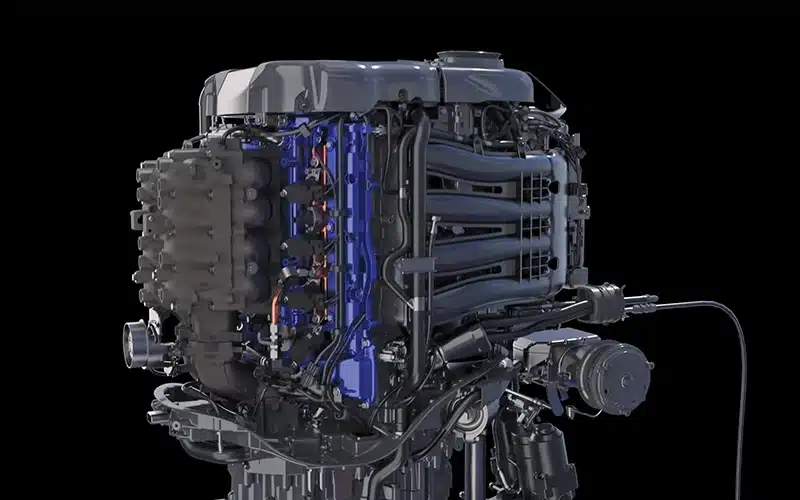
These are challenges that will need to be further addressed through innovation before the necessary infrastructure investments will likely be made to distribute hydrogen fuels to the U.S. public. It is bold R&D projects like this that advance our understanding and take the necessary steps towards ambitious emissions reduction goals.
Pursuing the Audacious
Roush is a name familiar to anyone who has followed stock car racing or performance vehicles, but the company is also pushing engineering limits in other industries such as aerospace, defense, and energy. Their experience with hydrogen fuel includes designing land speed record vehicles and spacecraft. As such, they were the perfect fit to join Yamaha and Regulator in this project, leading the integration of the hydrogen fuel system. This included not only the physical planning, but safety analysis and specifications development.
For Regulator’s part, they repurposed the hull form of their 26XO model and retooled the underdeck compartments to facilitate Roush’s prototype fuel system. Notably to anglers, most of the forward storage and fish boxes are sacrificed to accommodate several large hydrogen tanks.
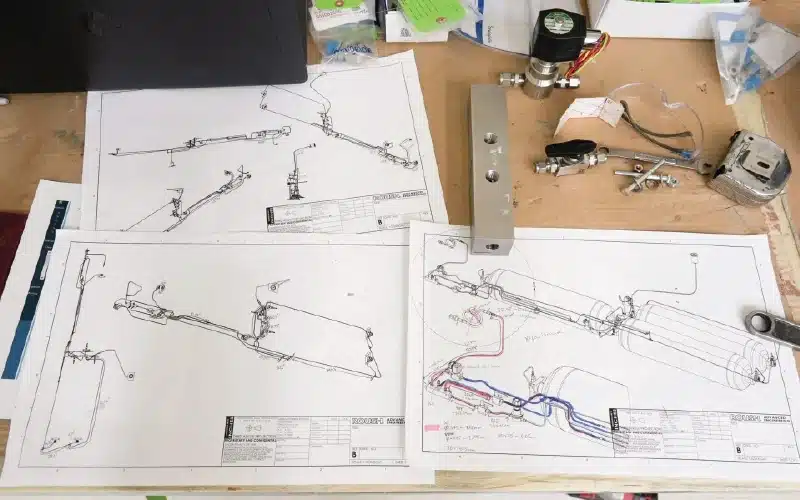
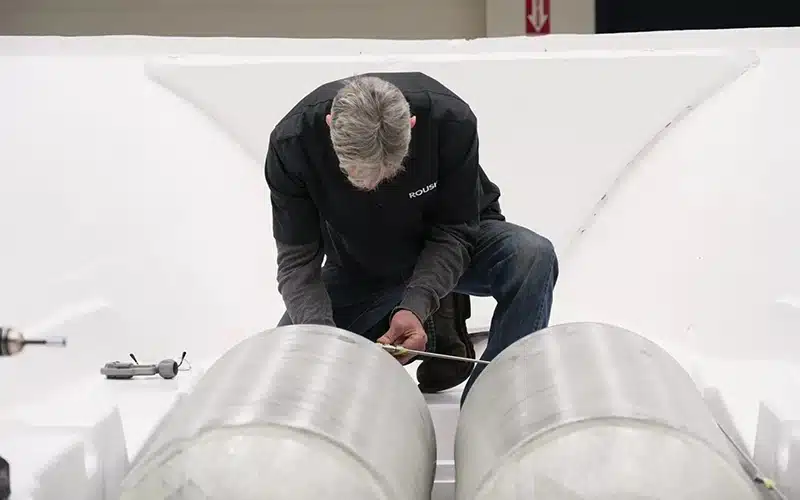
Critical observers may point out that highly pressurized tanks alone–regardless of what’s inside them–are enough to cause quite an accident should they become compromised. That may be a valid point, but ultimately that will be up to engineers and industry experts to evaluate and design safety standards around hydrogen systems. “In the future, as we design boats, if this proves what we think it will, it could be very possible that we are designing hulls around these hydrogen fuel tanks,” concludes Maxwell.
Certainly, industry observers and consumers will be interested to hear what comes of their real-world testing in the coming months and years. Pioneering new research and development is a brave and expensive undertaking that may not always succeed, but ultimately contributes to the betterment of our industry and its sustainability. And that’s what R&D is really all about: pushing the limits of our current abilities and learning everything we can from those efforts.
